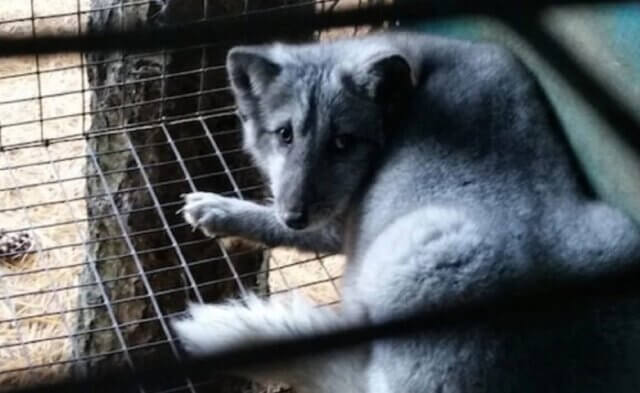There are tons of perks when you work for PETA: cool coworkers, a worthwhile cause, and an office building with many windows overlooking the Elizabeth River in Virginia. I’m talking huge windows. But as is often the case, every perk comes with a price. Honestly, we love birds, but we really, really don’t want them to crash our meetings.

You see, we PETA folks like our views, but unlike a lot of other offices, we also care about how our feathered friends view us. Luckily, there are lots of ways to help keep birds from colliding with windows, and we urge you to implement them not only at home but also at work (at least, if there’s an issue at either location):
- Play detective. Are there certain windows in your home or office that cause more collisions than others? If a window is on the ground level, go outside and look at it to get a bird’s-eye view. If you see reflected trees, so will they, and that might confuse them. A little detective work goes a long way toward helping you determine which windows to focus on.
- Stop being so transparent. Find ways to minimize the reflectivity and transparency of glass windows and doors. Most window films, such as solar films, won’t keep birds away. Retrofit windows with patterned window film, which you can apply to the outside of your windows.
- Decorate with decals and tape. If you’re more of a DIYer, bust out some “MacGyver” ingenuity and use durable tape (opaque or colored, never clear), decals, or stickers that can withstand the weather. Spacing is the key: Place the tape on the outside of windows in vertical stripes 4 inches apart or in horizontal stripes spaced 2 inches apart. Irregular patterns will also work, as long as you follow the same spacing guidelines.
- Brush birds away. Use tempera paint to create designs on your windows. Make it a fun family project by using stencils.
- Explore all your options. Look for ways to cover the maximum amount of surface area outside your window. Lightweight netting can be fitted over windows, as long as it’s several inches away from the front of the window so that birds won’t hit the window through the netting. Also consider buying Acopian BirdSavers curtains, which are made from paracord and can be custom-fitted, or consider making them yourself.
- Avoid a “dine-and-crash” situation. Place birdfeeders and nest boxes at least 30 feet away from windows or within 2 to 3 feet of them.
- Help our feathered friends. If you find a bird on the ground who is dazed and confused, put some gloves on and place the bird somewhere safe and quiet to recover for an hour or two. Normally, birds can be cleared for takeoff after a brief rest and quick evaluation.
- Be prepared if the birdie doesn’t bounce back. If your patient requires more medical attention, call animal control (have the number handy before something happens, and know what action to take for after-hours emergencies). If animal-control officials can’t help, they should be able to refer you to a wildlife center, rehabber, or veterinarian who can. And remember: It’s illegal in most states to try to rehabilitate wild animals yourself, so you must take them to a specialist.
Written by Amy Skylark Elizabeth





